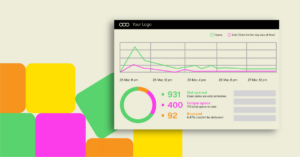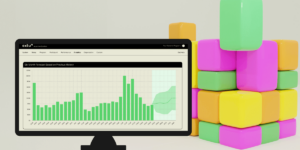What is an incentive program? Incentive programs are the structured use of rewards and recognition to motivate desired behavior from a specific group of people.
Incentive programs are behavior-changing tools that can be used for a variety of reasons. By assigning rewards for demonstrating desired behaviors, those behaviors will be repeated more often. This is a psychological principle known as Operant Conditioning.
Incentive programs generally make use of non-cash rewards, instead of commission or cash compensation. This is because non-cash rewards are more effective motivators of long-term behavioral change. They have social and emotional value that cash does not.
What Is an Incentive Program?
Examples of Incentive Programs
Companies use incentives to align behavior with the goals of their business. Examples of incentive programs include:
- Sales Incentives – Improving sales performance by motivating sales reps to surpass performance metrics.
- Employee Incentives – Inspiring better workplace performance or improved employee retention by rewarding and recognizing employees for meeting goals and upholding company values.
- Customer Incentives – Increasing customer profitability by rewarding loyalty, order size, order frequency, or brand advocacy, used by both B2B and B2C organizations.
- Channel Incentives – Rewarding channel partners for their loyalty, for sharing additional sales and marketing data, or for moving more product to increase the profitability of a sales channel.
- Dealer Incentives – The use of rewards to motivate dealers to sell more of your product, which manufacturers and distributors use to increase their market penetration.
- Contractor Loyalty Incentives – Building longer-lasting, more profitable relationships with an indirect salesforce through the use of incentives.
- Referral Incentives – Incentivizing partners to provide qualified referrals for additional business opportunities or partnerships.
- VAR Incentives – Using incentives to build product familiarity, brand preference, and loyalty among resellers and other strategic partners to increase market share and product margin.
- SPIFFs and Rebates– Using SPIFFs as part of a short-term sale promotion gives a quick boost to specific products, while rebate incentives can help generate buyer demand.
What Are Some Types of Incentive Rewards?
What is an incentive program without rewards? Not very effective. Common types of incentive rewards include:
- Points-based merchandise rewards
- Group travel
- Debit card rewards
- Gift card rewards
- Recognition
Points-based merchandise rewards, or online rewards, are one of the most common types of incentives. This is because online reward programs are scalable and offer wide appeal. Tangible reward options are more memorable since the reward itself serves as a physical reminder.
Additionally, giving participants the option to choose their own rewards makes the reward experience more personalized and meaningful. The use of points allows this option to be cost-effective since participants are less likely to associate the reward with its cash value.
Group travel is an experiential reward, where participants are rewarded for surpassing their goals by being invited to a group travel event. Incentive travel is the most memorable and emotionally impactful type of incentive.
By providing opportunities for positive shared experiences, incentive travel events create a “positive frame of recall for not just one year to the next, but for multiple years.” However, since it is often more costly, incentive travel is usually a reward reserved for top performers.
Debit card rewards and gift card rewards are less personal and memorable than online or travel rewards. But they are fast and, with the rise of e-delivery, extremely convenient incentive options. Both types of card rewards are more effective motivators of behavioral change than cash, since they build brand association and are seen as a bonus instead of compensation.
While both gift and debit card rewards are effective for short-term promotions, gift cards typically have more long-term value, since participants are more likely to spend that value on things they want rather than on utilitarian needs.
Recognition is another powerful motivator that has emotional and social value. Over 76% of employees found recognition from their peers very or extremely motivating, and 88% found recognition from their managers very or extremely motivating. This same principle holds true for sales reps, channel partners, and customers, who all want to feel like their contributions are valued.
See How Extu Can Help You
Grow Your Business
How Do You Manage an Incentive Program?
The next question people ask after “What is an incentive program?” is usually “How do I manage an incentive program effectively?”
Generally, modern incentive programs rely on online interfaces and digital platforms to assign points, fulfill rewards, and communicate with participates. This improves the scalability and accessibility of these programs and makes it easier for businesses to track data and manage redemptions.
While it’s possible to manually manage an incentive program, this is generally only feasible for very small organizations. Through working with an outside incentive company and managing their program through an online admin portal, 70% of businesses spend less than two hours a week managing their incentive program.
In addition to providing digital interfaces, effective communication is an important part of managing an effective incentive program, both during enrollment and throughout the lifetime of the program.
Learning More About Incentives
Incentive programs are a strategic tool that are customizable to the unique needs of a business and the unique makeup of the audience they are trying to motivate. If answering the question “What is an incentive program?” only has you asking more questions, you’re in the right place. For a complementary planning and whiteboarding session, please visit our contact page.



